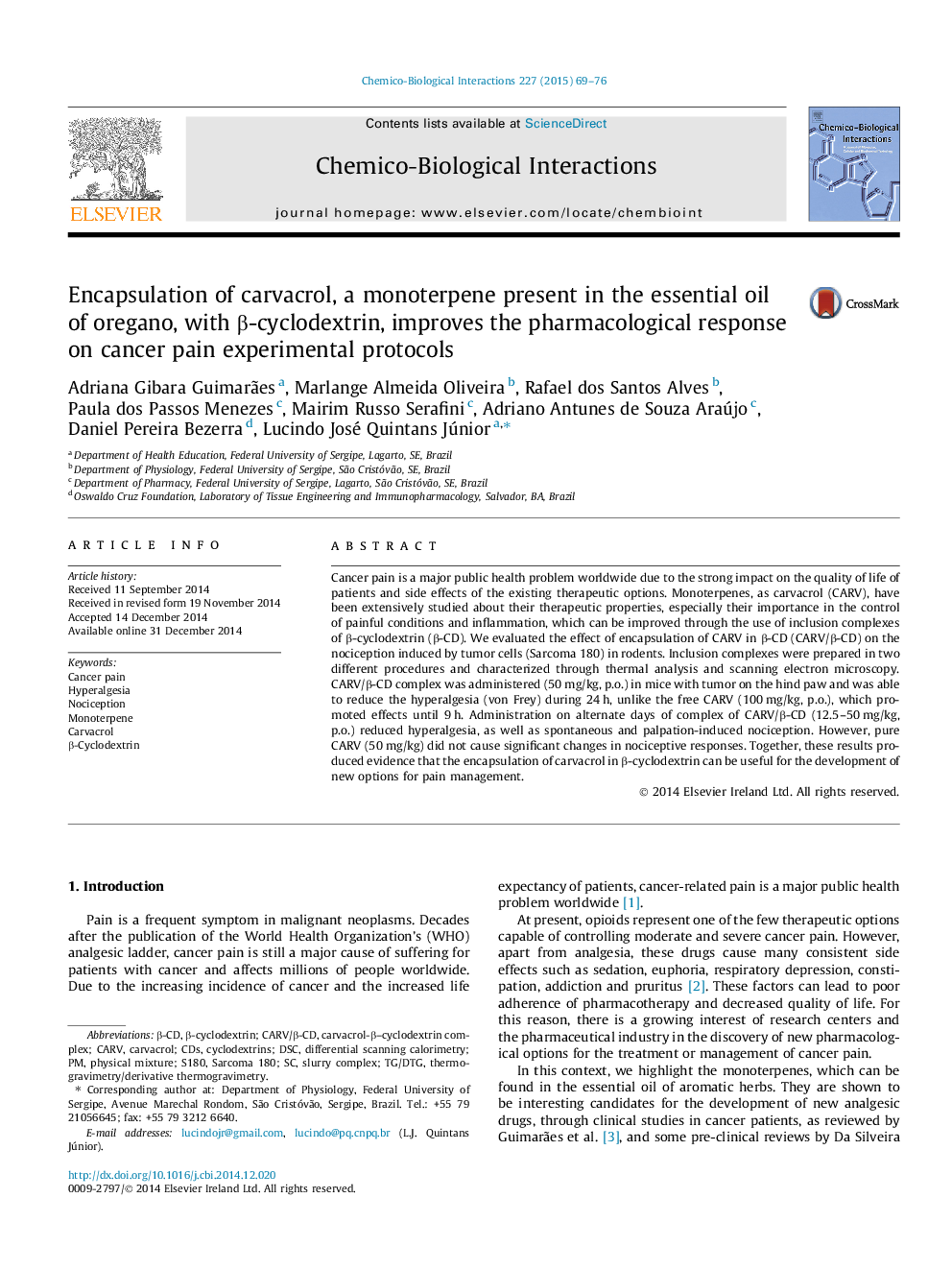| Article ID | Journal | Published Year | Pages | File Type |
|---|---|---|---|---|
| 2580295 | Chemico-Biological Interactions | 2015 | 8 Pages |
•Encapsulation of carvacrol in β-cyclodextrin was better obtained by the slurry method.•Complexation increased the anti-hyperalgesic effect for 15 more hours.•Encapsulation of carvacrol in β-cyclodextrin improved analgesic effect of carvacrol.•CARV/β-CD complex appears to be an interesting candidate for the development of new strategies for the treatment of pain.
Cancer pain is a major public health problem worldwide due to the strong impact on the quality of life of patients and side effects of the existing therapeutic options. Monoterpenes, as carvacrol (CARV), have been extensively studied about their therapeutic properties, especially their importance in the control of painful conditions and inflammation, which can be improved through the use of inclusion complexes of β-cyclodextrin (β-CD). We evaluated the effect of encapsulation of CARV in β-CD (CARV/β-CD) on the nociception induced by tumor cells (Sarcoma 180) in rodents. Inclusion complexes were prepared in two different procedures and characterized through thermal analysis and scanning electron microscopy. CARV/β-CD complex was administered (50 mg/kg, p.o.) in mice with tumor on the hind paw and was able to reduce the hyperalgesia (von Frey) during 24 h, unlike the free CARV (100 mg/kg, p.o.), which promoted effects until 9 h. Administration on alternate days of complex of CARV/β-CD (12.5–50 mg/kg, p.o.) reduced hyperalgesia, as well as spontaneous and palpation-induced nociception. However, pure CARV (50 mg/kg) did not cause significant changes in nociceptive responses. Together, these results produced evidence that the encapsulation of carvacrol in β-cyclodextrin can be useful for the development of new options for pain management.
Graphical abstractFigure optionsDownload full-size imageDownload as PowerPoint slide
